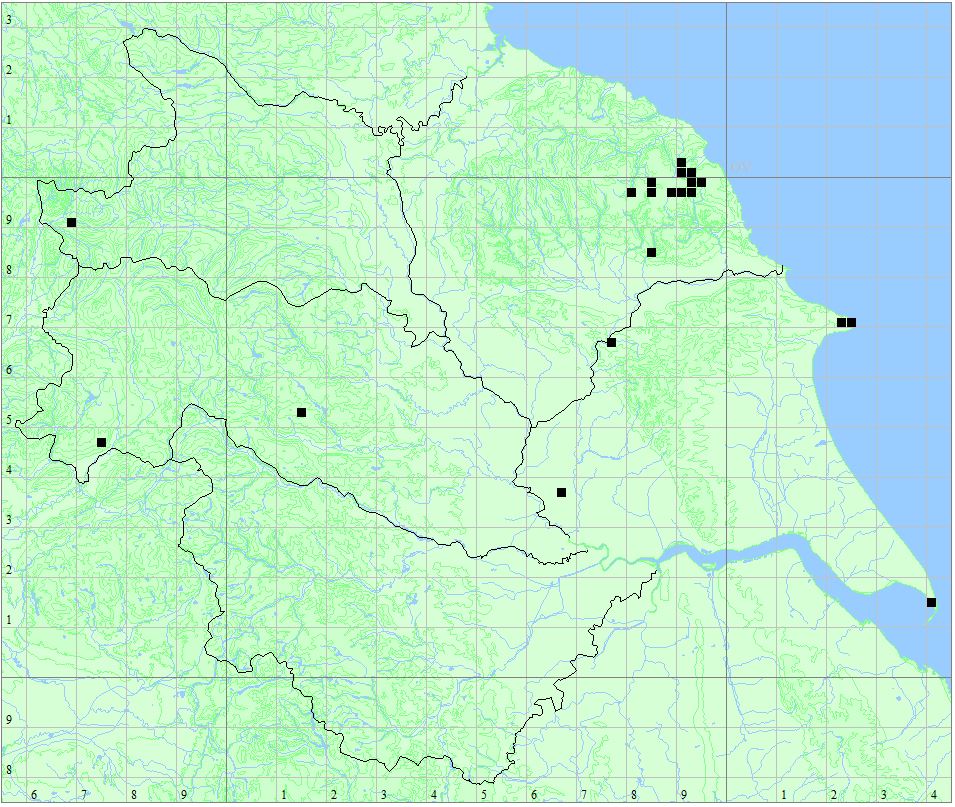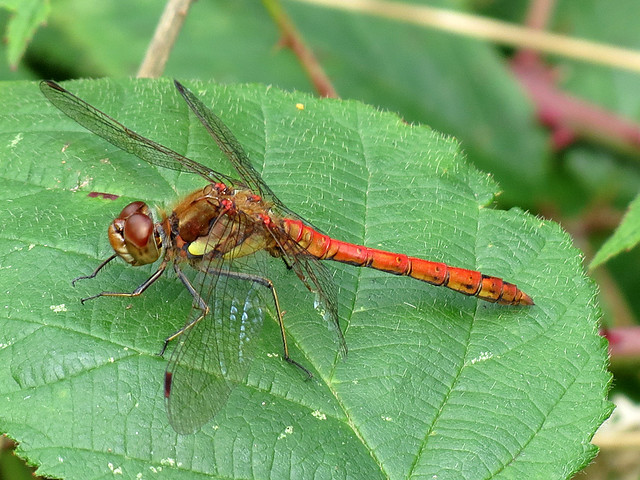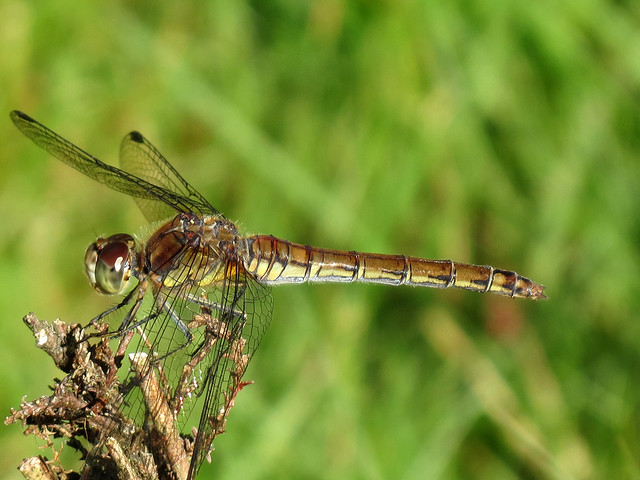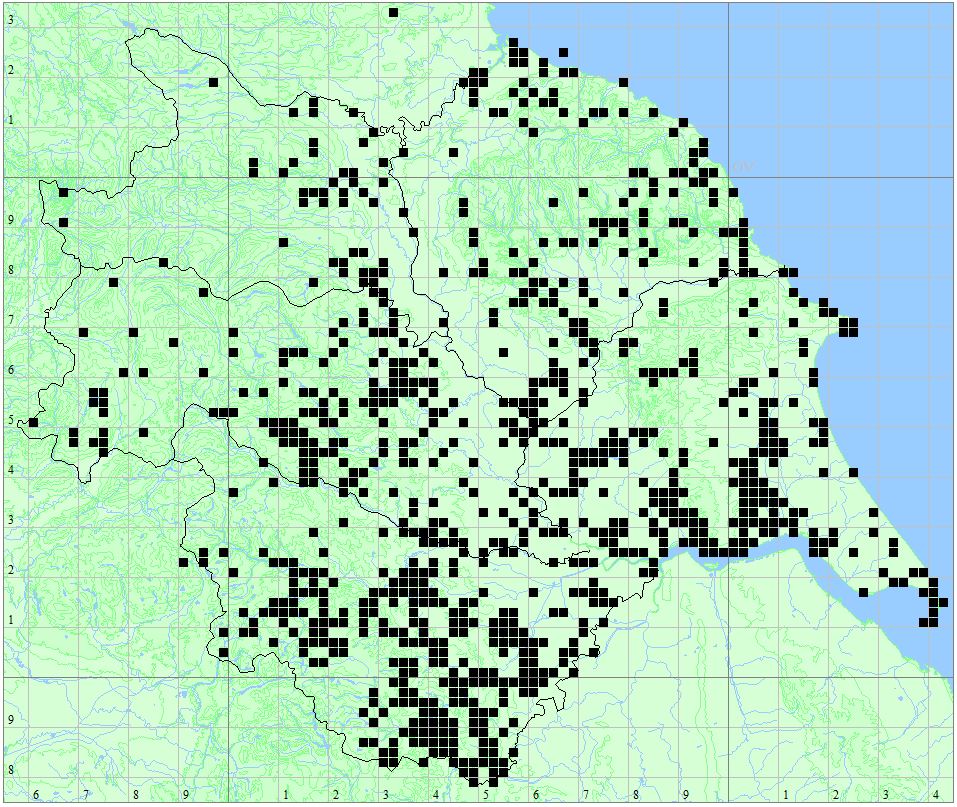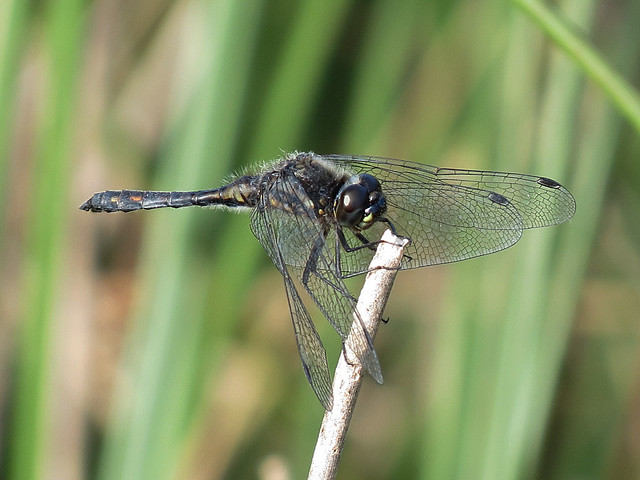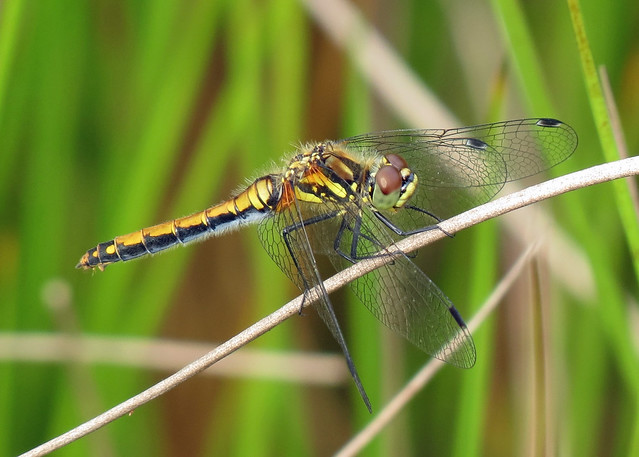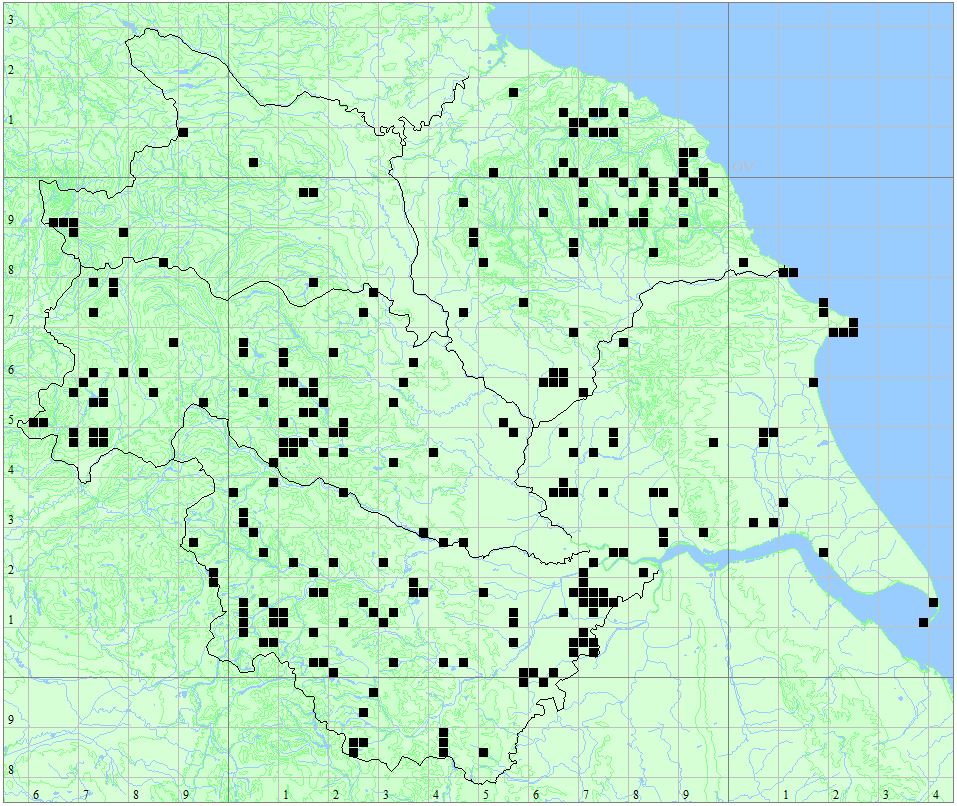<-Previous Species – Next Species->
Length
36-46mm; Wingspan: Male 57-63mm; Hindwing 28-34mm; Larva: 17-23mm
Males
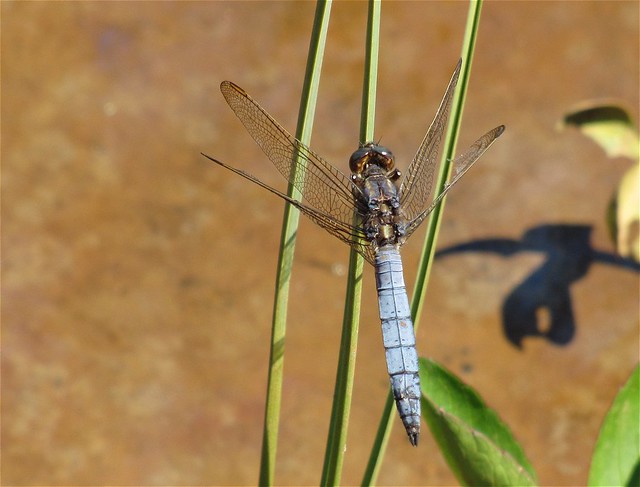
Dark brown thorax with buff antehumeral stripes, which fade with age. When mature the abdomen is blue, except S1. Blue grey eyes. Wings have a yellow tint when immature which clear as they mature. Pale yellow costa and orange pterostigma. Blue grey eyes.
Females
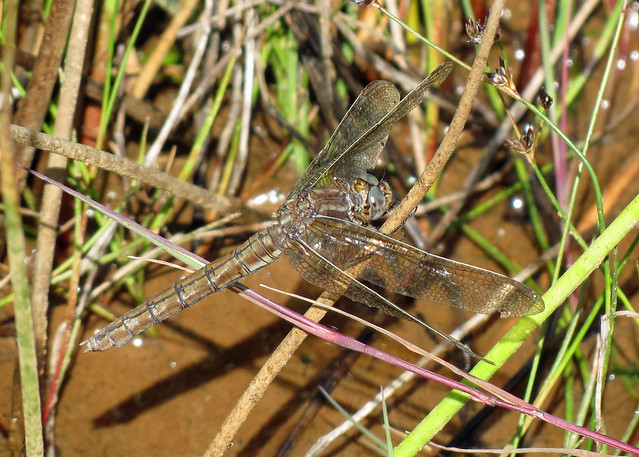
Dark brown thorax with buff antehumeral stripes. The abdomen is a yellow/brown colour with a thin dark keel line down the centre. Pale yellow costa and orange pterostigma.
Behavior
Males have small territories observing them from the ground or low perches. Copulation occurs on the ground and can last anything from 2-60 minutes. Flight is fast and erratic with brief spells of hovering. Wings are held well forward when at rest. Females spend a lot of time resting in vegetation not far from water.
Habitat
Acidic wet heath and peaty moorland sites typically with sphagnum mosses, frequents pools, runnels and streams.
Flight Period
 Status
Status
Confined to VC62 where it appears to be present in suitable sites surrounding Fylingdales Moor. Several records of dispersing individuals.
